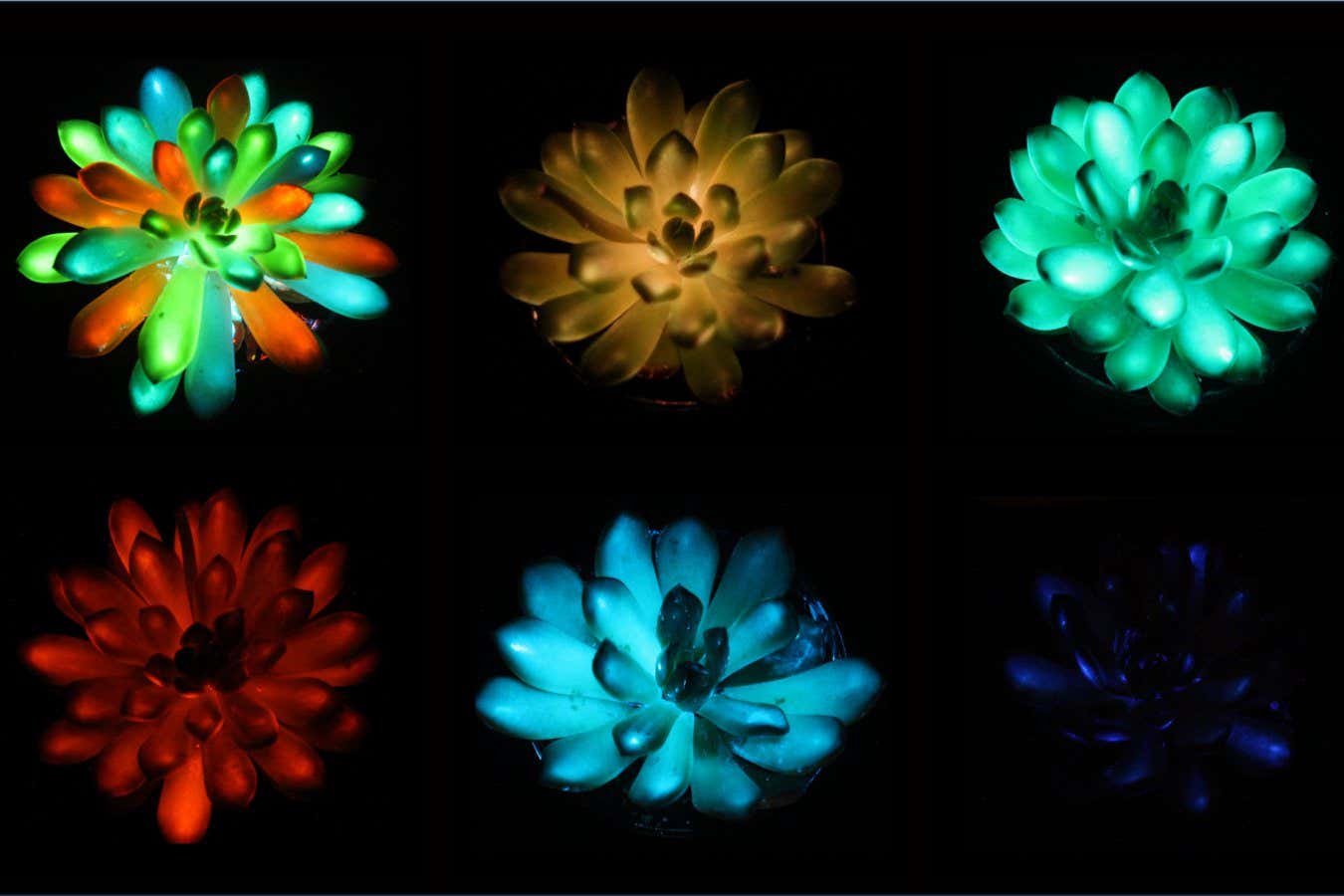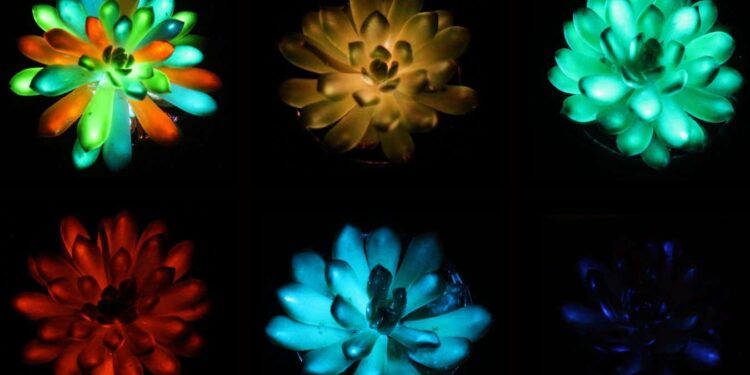
These succulent plants glow after being infused with phosphor particles that absorb and slowly release light
Liu et al., Matter
There are the bad product ideas that just make you sigh, and then there are the ones you absolutely loathe. For me, glowing plants created by pumping leaves full of phosphorescent chemicals fall firmly in the latter category.
Such plants have been created by researchers from South China Agricultural University, who claim in a study published today that the plants have “unprecedented brightness” and are a step towards “sustainable, eco-friendly, plant-based lighting systems”.
People have been trying to create glowing plants for decades. The big challenge is making the glow bright enough for our eyes to see. A 2013 Kickstarter project raised nearly half a million dollars, but failed to deliver.
Last year, US biotech company Light Bio launched the Firefly Petunia, the first genetically modified glowing plant to go on sale commercially. It claims that the plant’s brightness is “similar to moonlight”, but judging from photos on social media, we aren’t talking a full moon here.
There is a reason why this is so difficult. Plants get their energy from light, but photosynthesis is wildly inefficient. It is estimated that most plants capture less than 2 per cent of the light that falls on them, and they need some of this captured energy to survive and grow. That leaves precious little to convert back into light.
The bottom line is that converting energy captured by photosynthesis into light is never going to deliver trees that can replace streetlights. This inefficiency is probably also why almost all animals steal the energy captured by plants rather than bothering to photosynthesise themselves (and why putting solar panels on farms beats turning crops into biofuels).
For this reason, a few groups have instead been trying to physically add persistent phosphors to adult plants. We are talking here about the compounds that make things such as stick-on-the-ceiling-stars glow for a while after being exposed to light, a phenomenon known as afterglow luminescence.
Some persistent phosphors are much more efficient than photosynthesis, meaning more light out for the same amount of light put in. The problem is getting the phosphor nanoparticles evenly distributed inside the leaves. But now the researchers in China have found that such distribution is easily achieved in succulents such as Echeveria “Mebina”, allowing them to create brightly phosphorescent plants of various colours by injecting phosphors into each leaf by hand.
This is little more than a cheap gimmick. Don’t get me wrong, I like the idea of genuine glowing plants. I might even buy a Firefly Petunia were they available outside the US. But making plants glow by physically injecting glowing compounds into them is cheating. At the very least, the glow will fade if these plants survive and grow larger. There is also a potential pollution issue when the plants die and are disposed of.
OK, this isn’t as unethical as the practice of dyeing aquarium fish, but it is just as tasteless as dyeing roses blue. (No, I am not having an Alice in Wonderland moment – you really can buy painted roses.) Nor is there any discussion in the team’s paper of the environmental and safety aspects of plants with high levels of phosphors in their leaves. I asked the researchers about this, but had no reply at the time of writing.
Now, if the plants were genetically engineered to make their own persistent phosphors that are fully biodegradable, it would be a different story. In fact, giving plants this ability might even boost the efficiency of photosynthesis. Being able to temporarily “store” light could help even out fluctuations in light levels, convert unusable wavelengths into useable ones and allow photosynthesis to continue into the night. One day, perhaps entire fields will glow in the dark.
In the meantime, I hope fake glowing plants created by injecting phosphors never reach shop shelves – but I rather fear they shall.
Topics:
Source link : https://www.newscientist.com/article/2494055-glow-in-the-dark-plants-to-replace-streetlights-forget-it/?utm_campaign=RSS%7CNSNS&utm_source=NSNS&utm_medium=RSS&utm_content=home
Author :
Publish date : 2025-08-27 16:00:00
Copyright for syndicated content belongs to the linked Source.












